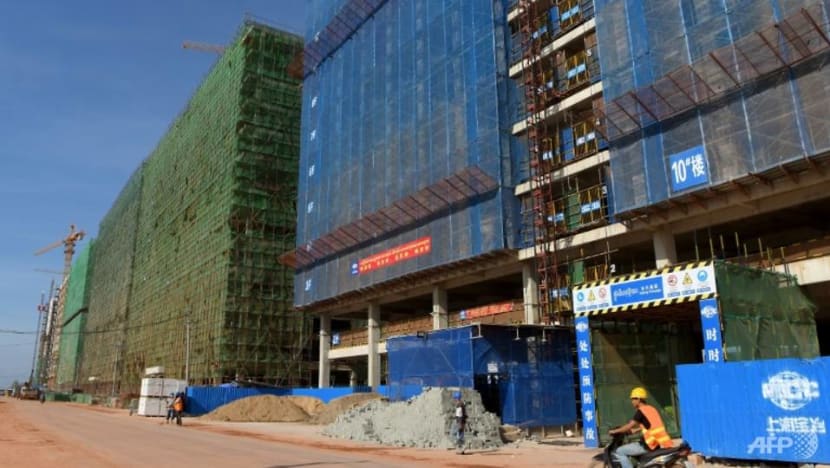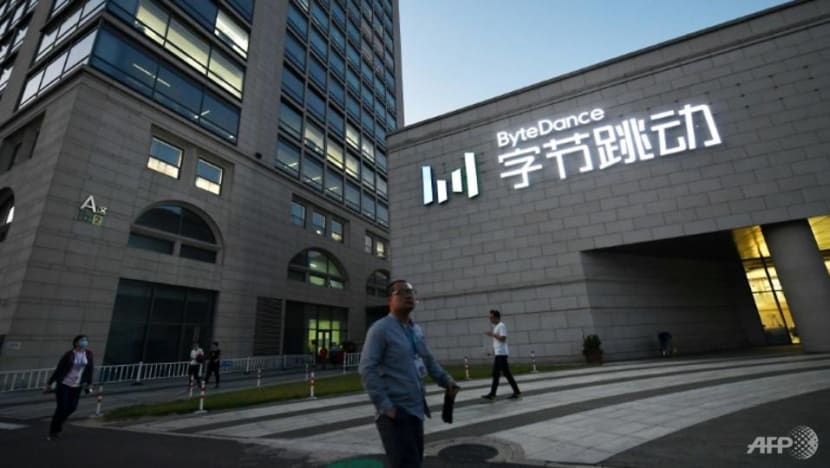commentary Commentary
Commentary: Looks like China has its own '+1' strategy and Southeast Asia is it
Increasingly, Chinese companies are finding the region an appealing alternative to compensate for their loss in market growth elsewhere, say Dr Lau Kong Cheen and Dr Vanessa Liu.

Jack Ma, founder of Chinese e-commerce giant Alibaba, speaks during the launch of Alibaba's office in Kuala Lumpur, Malaysia, Jun 18, 2018. (Photo: Reuters/Lai Seng Sin)
SINGAPORE: There is a concept among the business community known as the “China Plus One (+1)” strategy where China remains the main supply source or consumer market for a company but a business diversifies certain operations to other countries.
Companies with a stake in the lucrative Chinese market may find it imperative to diversify their supply chains for a variety of reasons: Rising business costs in China, uncertainties stemming from the US-China trade spat and, more recently, border closures owing to COVID-19.
"It is worth emphasising that China appears ahead of the global curve when it comes to restarting the economy following months of lockdown, and many of the reasons why companies are in China in the first place still hold true today," Alan Beebe, President of AmCham China, was quoted in an Apr 17 press release detailing a joint survey with PwC of 25 US companies in China.
READ: Commentary: China fixes ‘something seriously wrong’ with its economy
READ: Commentary: Why China is one of few countries to achieve growth this year
"As a result, we expect to see companies adopting a 'China + 1' strategy as a way to diversify supply chain risks while tapping into China market opportunities."
CHINA’S + 1
However, recent trends point to China adopting its own “+1” strategy. Southeast Asia appears to be at the heart of that approach, particularly for China tech behemoths.
Chinese business ventures are not new to the region as large tech giants such as Huawei and Alibaba, have a considerable presence in the region’s markets directly or through affiliates.
Further, data compiled by the AidData Research Lab, affiliated to the College of William & Mary in the US, titled China’s Public Diplomacy in East Asia and the Pacific 1.0, shows China has contributed to a steady flow of infrastructure investment projects in Cambodia, Indonesia, Myanmar and Vietnam between 2001 and 2016.
READ: Commentary: China is winning the global fight over minerals to make electric cars and more
READ: Commentary: Will China’s new data security initiative define global norms?
But the presence of Chinese investments here has intensified within the last two years.

For instance, just in the first seven months of last year alone, as the trade war with China gained speed, Chinese companies invested approximately US$1.78 billion (S$2.44 billion) into tech start-ups in the region, including Malaysia’s Easy Parcel, Singapore’s livestreaming company Bigo and Indonesia’s Tokopedia by Chinese companies.
According to fintech firm Refinitiv, this was eight times higher than the same period in 2018.
Overall, Chinese investment in the region has almost tripled in value from US$3.5 billion in 2010 US$10.2 billion in 2018, data provided by ASEANstats shows.
Recently, Chinese tech companies such as Bytedance, Alibaba and Tencent have been investing in business initiatives in Singapore.
READ: Commentary: Why is Alibaba planning to pour S$3 billion into Grab?
Bytedance, the company that owns TikTok, announced plans to invest billions of dollars and recruit hundreds of employees in Singapore over the next three years.
Similarly, Tencent will be opening its regional hub in Singapore while Alibaba intends to invest US$3 billion in Southeast Asian-focused ride-hailing company Grab.
What has sparked this increased interest in the region? To comprehend this, it’s worth looking at the business ambitions of Chinese tech companies and the constraints they face.
AMBITION AND CHALLENGES OF CHINESE TECH COMPANIES
First, all of them want to access new markets for revenue growth as domestic competition within China has gotten more aggressive. Many of these firms also have aspirations to be global companies.

Second, to stay ahead of the competition, Chinese tech companies need to acquire strategic resources such as new technologies, talent with the relevant expertise and a larger ecosystem network to elevate them to the next level.
Despite having such strong ambitions, these Chinese tech companies have faced strong headwinds. In particular, the push back from the US through its trade war and decoupling with China.
READ: Commentary: Is China turning inwards?
READ: Commentary: Why doesn't India have as many tech unicorns as China does?
TikTok and Tencent’s WeChat are some of the Chinese tech companies facing a strong backlash in the US market.
Trust towards Chinese companies in general has deteriorated lately due to China’s perceived lack of transparency in handling COVID-19 outbreak, according to a study by the Brunswick Group.
LOSING HONG KONG AS A GATEWAY
Hong Kong has lost its lustre as the preferred gateway for China to the world. It was the centre where global MNCs and Chinese tech companies collaborated and closed deals until frequent hostile street protests and stronger mainland government intervention disrupted this.
Business travel between China and Hong Kong had been further inhibited. The city was not in the list of countries granted green lane access to the mainland.

A survey by the American Chamber of Commerce reported that almost 40 per cent of its members had plans to leave Hong Kong. CEO of the Hong Kong General Chamber of Commerce George Leung Siu-kay noted in a radio programme in Hong Kong that the city is no longer a business paradise for enterprises.
READ: Commentary: Hong Kong’s future clearly lies with China
Having to move out of the US and Hong Kong, China tech firms’ access to capital markets on Nasdaq and the Hong Kong Stock Exchange will be constrained.
This is not healthy when they need funds to fuel global expansion. They will need a new location where they can gain access to more private or public investors.
HOW CHINESE TECH COMPANIES CAN FULFILL THEIR AMBITIONS
Chinese companies are also trying to evolve their status and establish themselves as international brand to shed negative views that come with being seen as a Chinese firm.
Setting up global operations in a politically neutral country that provide access to talent, financial markets and business networks for growth can help achieve that.
READ: Commentary: A Digital Iron Curtain may be descending between the US and China
Chinese tech firms also want to access companies they can invest in or acquire to bolster their technology capabilities, regional networks and access to new markets.
For instance, Alibaba’s recent investment in Grab could give it entry into markets in the region where ride-hailing company already established a strong presence.
WHY SOUTHEAST ASIA?
As of November 2019, Chinese companies had already expanded into almost 130 countries in the world. Research by both the Pew Research Centre and The Brunswick Group has demonstrated that emerging markets eager to attract investments are overwhelmingly welcoming to Chinese businesses.

Similarly, developed countries also present equally attractive opportunities for Chinese tech companies.
Bringing in financial and technological investments to local companies, opening up sales channels into China, creating job opportunities and attracting Chinese tourism money are some of the prime appeal for welcoming Chinese businesses into their shores.
By 2030, ASEAN is projected to be the fourth-largest single market economy in the market.
It is thus unsurprising that Chinese investments into the region are projected to reach US$500 billion by 2035 as reported by the Asean+3 Macroeconomic Research Office.
This shows that Chinese companies are aggressively looking for ways to deepen their roots in the Southeast Asian market as the US becomes a more hostile destination.
READ: Commentary: The biggest IPO in history is happening but millions may miss out
With attractive benefits from the China-ASEAN Free Trade Agreement (AFTA), Chinese tech companies will be keen to increase their presence in regional markets and form a new ecosystem.
This may attract even more global FDI to the region, especially from western MNCs that are forced to withdraw from China and Hong Kong due to recent geopolitical tensions.
That is why Southeast Asia is seeing strong interest from Chinese companies as they find the region an appealing alternative to compensate for their loss in market growth elsewhere.
The spat between US and China may see more investments shift towards the ASEAN region, driving growth and job creation.
For Chinese companies being hindered from expanding into the US markets, they now have a new lease of life for internationalisation.
Indeed, there is a silver lining for everyone.
Dr Lau Kong Cheen and Dr Vanessa Liu are senior lecturers, Marketing Programme at the School of Business in the Singapore University of Social Sciences.

















